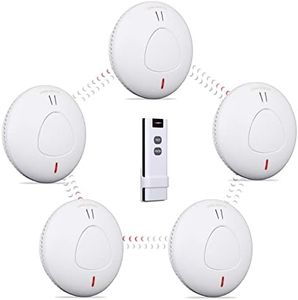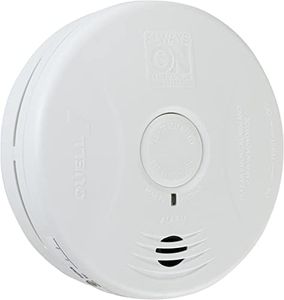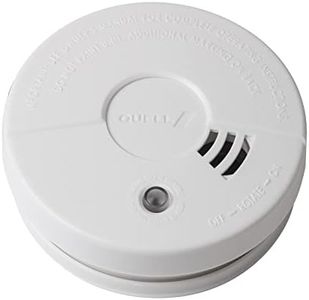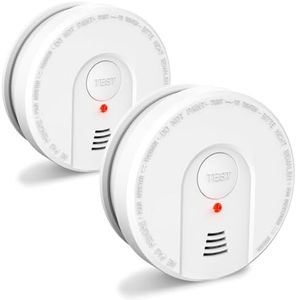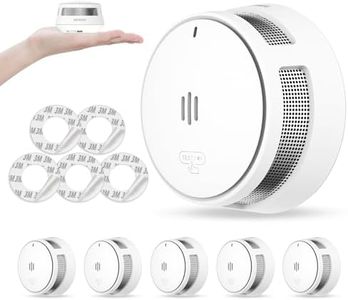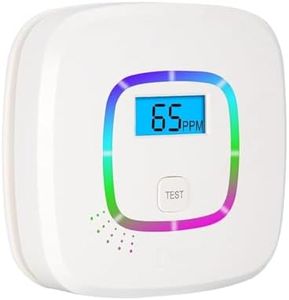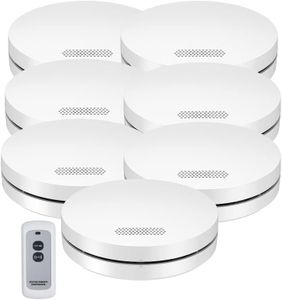We Use CookiesWe use cookies to enhance the security, performance,
functionality and for analytical and promotional activities. By continuing to browse this site you
are agreeing to our privacy policy
10 Best Smoke And Co Alarm
From leading brands and best sellers available on the web.Buying Guide for the Best Smoke And Co Alarm
Choosing a smoke and carbon monoxide (CO) alarm is a crucial decision for your safety and peace of mind. The right device can provide early warnings about smoke or dangerous CO levels, potentially saving lives. When shopping for an alarm, focus on reliability, the types of hazards it detects, ease of installation and maintenance, and how easily you'll notice its alerts. It's important to match the features of the unit with your living situation and personal needs to ensure maximum protection.Detection TypeDetection type refers to what hazards the alarm can identify, such as smoke, carbon monoxide, or both. Some alarms only detect smoke, some only CO, and many are combination units that detect both. Smoke can be caused by fires, while CO is an invisible, odorless gas that can come from faulty appliances and is deadly at high levels. If you want comprehensive protection, especially in homes with gas appliances, fireplaces, or attached garages, a combination unit is often the best choice. If you have specific needs (for example, you already have a smoke alarm), a single-type device can be sufficient. Always consider the main risks in your home when choosing.
Sensor TechnologySensor technology relates to how the device detects smoke or CO, such as ionization, photoelectric, or electrochemical sensors. Photoelectric sensors are better at detecting slow, smoldering fires, while ionization sensors are more responsive to fast-flaming fires. Electrochemical sensors are considered reliable for CO detection. Some alarms combine both smoke sensor types for better overall protection. When deciding, think about the most likely fire risks where you live. A combination of sensor types usually offers the best coverage.
Power SourceThe power source is how your alarm operates—either via replaceable batteries, sealed long-life batteries, or by being hardwired into your home electrical system (often with a battery backup). Battery-powered units are easy to install and can be placed anywhere but require regular battery changes or replacement every several years. Hardwired alarms are more reliable and may be interconnected with other alarms for greater coverage, but installation is more involved. If you prefer low maintenance, look for sealed, long-life battery models. Your home’s layout and your comfort with replacements can help you decide which is best.
InterconnectivityInterconnectivity means whether your alarms can link to each other so that when one goes off, all sound an alert. Some models use wires, while others use wireless technology. This is especially helpful in larger homes or multi-level layouts, ensuring you'll hear the alarm wherever you are. If you live in a large home or want extra assurance you won’t miss an alert, choose interconnectable alarms. If your place is small, a basic model may be enough.
Alert Type and VolumeAlert type and volume refer to how the alarm notifies you, such as loud beeps, voice alerts, or flashing lights. Some alarms offer additional visual or vibrating alerts, which can be very helpful for people who are hard of hearing. The loudness of the alert is measured in decibels—louder alarms are better in larger or noisier households. If you have hearing impairments or sleep heavily, look for alarms with visual, tactile, or especially high-volume alerts.
Maintenance FeaturesMaintenance features include low-battery indicators, test buttons, and end-of-life warnings. These let you know when it’s time to replace batteries or even the entire alarm. The easier it is to maintain and check your alarm, the safer you’ll be. Prioritize devices that make it simple to test and maintain, especially if you tend to forget scheduled checks.
Certifications and StandardsCertifications and standards show that the alarm meets safety requirements from recognized organizations, such as UL or other local standards. Certified alarms are tested for effectiveness and reliability. Always choose an alarm certified to meet your country's safety standards—this ensures you're getting quality protection and may be required by law.
